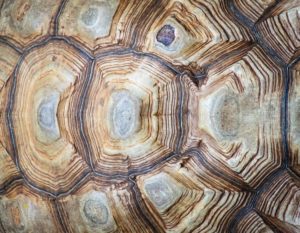You have no items in your cart. Want to get some nice things?
Go shopping
For almost his entire adult life, Joris-Karl Huysmans supported himself by working in the French Ministry of the Interior. Despite finding his duties dull, he valued the space and financial security the civil service gave him to work on his fiction and art criticism. More than once he was found reading novels, reference books, and art theory at his desk, though this didn’t prevent him from rising up the ranks throughout his 32-year career.
I suspect working remotely (were it possible in the 19th century) would have suited Huysmans down to the ground. Firstly, it is much easier to neglect your duties at home, away from the watchful eyes of management; and secondly, while work and art kept Huysmans in Paris, something within him clearly craved the hermitic life. He spent his retirement living in a purpose-built house in the village of Ligugé, training to become a Catholic oblate at the abbey there. He also created one of the greatest recluses in literature.
À rebours (translated into English as Against Nature or Against the Grain) follows Jean Des Esseintes, the last scion of a once-powerful noble family, as he withdraws from Parisian bourgeois society to a retreat in Fontenay-aux-Roses. Huysmans had developed as a novelist under the mentoring of Émile Zola and the naturalist school of literature. However, in writing his “novel without a plot,” he took a conscious decision to turn away from the conventions of naturalism, fearing that they would soon bring him to a dead-end. Zola, on the other hand, upon reading À rebours, thought that “no literature could come from a genre exhausted in a single volume.”
Elsewhere, the book garnered equal partsscandal and acclaim. Émile Goudeau wrote in L’Echo de Paris that Huysmans had assembled “all the elements of human despair [and] solidly spat on every pleasure.” Oscar Wilde immortalised the book in The Picture of Dorian Gray as the “poisonous French novel” that leads to the titular character’s downfall.
What does À rebours offer the reader then, if not a plot? Principally, an exhaustive (and perhaps exhausting) catalogue of the ways Des Esseintes spends his dwindling riches decorating his Fontenay bolthole and indulging his excessive and rarefied tastes. I first came to the novel in March 2020, at the very start of the coronavirus lockdown; but rather than finding it a trying experience, I was inspired to embrace the life of a hermit suddenly thrust upon me.
Although Des Esseintes has many flaws, he also possesses an extraordinary imagination. While I was feeling distraught at not being able to attend a friend’s wedding in India, Des Esseintes consoled me with the idea that travel “struck him as being a waste of time, since he believed that the imagination could provide a more-than-adequate substitute for the vulgar reality of actual experience.” With a twist of rope imbued with the smell of the sea, he claims to be able to transport himself to any beach of his choosing. To further the illusion, Des Esseintes commissions the construction of a replica ship’s cabin within his dining room, equipped with a porthole opening onto a large aquarium filled with mechanical fish. Thus, he is able to enjoy all the sensations of a long sea voyage each time he sits down to dinner.
I was supposed to see Guns N’ Roses in concert upon my return from India (These were the two big events of my 2020 calendar.). Instead, I haven’t been to a gig for more than a year and a half. An absence of live music also clearly affects Des Esseintes in his seclusion. Rather than leave Fontenay to head to the opera, he instead creates “the mouth organ” – a system of spigots connected to liqueur casks. To his mind, each and every liqueur corresponds to the sound of a musical instrument. “Dry curaçao, for instance, was like the clarinet with its piercing, velvety note… crème de menthe and anisette like the flute, at once sweet and tart, soft and shrill.” Therefore, by carefully mixing his drinks, he can recreate the sound of a symphony. “To complete the orchestra there was kirsch blowing a wild trumpet blast… while peals of thunder came from the cymbal and the bass drum, which arak and mastic were banging and beating with all their might.”
Have I found myself sniffing old bits of string and hallucinating about brass sections? No, but during the long periods that the pubs were shut, the contents of my spirits cabinet undeniably grew, and I’ve embraced exploring the vast open worlds to be found in video games as a substitute for real travel. (The added value of this, of course, is that you can traverse time as well as space – in my case the American Frontier, Feudal Japan, and Post-Apocalyptic Seattle.)
Above all else, Des Esseintes is an aesthete, making décor of the utmost importance to him. In addition to creating the ship’s cabin for his dining room, he takes great pains over decorating his library, the heart of his retreat. Agonising over the colours, he ultimately decides that those “of feeble constitution and nervous disposition whose sensual appetite craves dishes that are smoked and seasoned… almost always prefer that most morbid and irritating of colours… orange.” To offset these bright goatskin-bound walls, he lacquers the room’s plinths and mouldings a deep shade of indigo and hangs a piece of royal-blue silk from the ceiling.
Later on, he fills his home with several wagonloads of flowers. However, believing that nature “has had her day… exhaust[ing] the patience of sensitive observers by the revolting uniformity of her landscapes,” he seeks out blooms that look as though they are artificial, with petals resembling flesh ravaged by “syphilis or leprosy.” This desire to shape the natural world extends into the book’s most infamous episode. Wanting something to subdue the colours in his new oriental rug, he purchases a large tortoise whose shell he has glazed in gold and encrusted with jewels (The sad creature dies shortly after its delivery.)
It can be easy to ignore the state of your home when the majority of your waking hours are spent confined in an office. But once I was responding to emails from the comfort of my sofa, all the work around the house that I’d happily been ignoring up until that point started nagging at me. An overwhelming urge to nest, to make my flat feel cosier, exerted itself. I quickly started spending the money that had previously gone to commuting and eating in restaurants on soft furnishings, houseplants, and furniture for my formerly unloved spare-room-turned-office. My plain white walls no longer seemed chic, and tins of paint with names like vardo and pitch blue started arriving from Farrow & Ball.
At the conclusion of À rebours, Des Esseintes abandons his retreat. With his health deteriorating as a result of his obsessive and reclusive lifestyle at Fontenay, his doctor tells him that he has to “abandon [his] solitary existence, to go back to Paris, to lead a normal life again, [and] above all to try and enjoy the same pleasures as other people.”
With the last of the pandemic restrictions now lifted, it seems the government is intent on the same prescription. Social distancing has been scrapped, nightclubs have reopened, employees are being forced back to their offices. We are no longer being instructed to stay at home. Despite the anxiety caused by the rising case numbers, this semblance of normality has, admittedly, provided some relief; but a part of me will miss the hermitic life that was thrust upon us. Given the rush for properties located in commuter belts and the widespread support for maintaining remote working for at least part of the week, I suspect many others now also feel the need to indulge their inner hermit. I don’t think I’ll be training to become a Catholic oblate just yet, but perhaps a fourth lockdown might do the trick.
About Patrick Christie
Patrick Christie's writing has appeared in HAD, Storgy Magazine, The Nonconformist, Streetlight Magazine, t'ART Magazine and the Mechanics Institute Review. He is currently studying for a Creative Writing MFA at Birkbeck, University of London.
- Web |
- More Posts(1)




